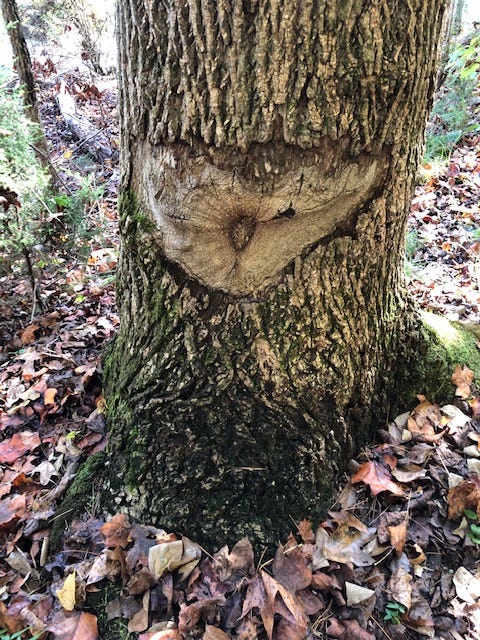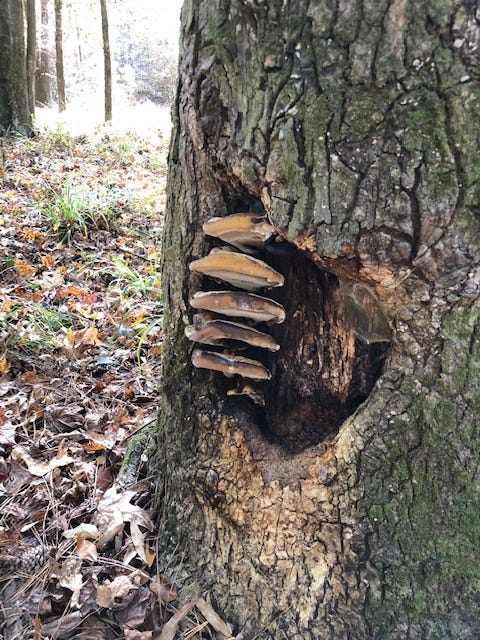Oftentimes when I walk in the woods, I come across trees with enormous lumps on them that look like tumors:
It doesn’t seem to happen to just one species or size of tree:
The lumps are covered with bark and aren’t oozing sap, but they definitely don’t look normal. Here’s an enormous one we found wrapped almost completely around a tree in Florida:
So, I began to wonder:
Do these trees have cancer?
After doing some research, the good news is that these lumps are not cancerous. However, they can be considered non-malignant tumors stemming from an out-of-control growth hormone put off by the tree and in that way, they are similar to cancer.
They’re typically called “burls.” They are formed from callus tissue that is a collection of cells the tree normally uses to cover up a wound – from, say, someone pruning its branches or a broken limb.
When a tree loses a branch from a storm or gets struck by lightning, opening up a gash in its trunk, the biggest danger is that fungus will enter into the tree. When a tree senses an injury from a broken limb or gash, it works to heal up the wound by sparking special growth hormones around the affected area. This causes the bark to grow extra fast, so the tree can cover up the wound at a rate of about 1/3 of an inch per year.
To keep the fungus out and the tree healthy, it must completely heal the gap within 5 years – any longer than that and the fungus has a chance to grow deep into the tree’s heartwood. A tree can usually kill fungus from the inside by flooding the area with water – fungus likes damp conditions, but not soaking wet ones. However, if a fungus makes it all the way to the heartwood, which no longer has living cells and can’t therefore produce wet conditions, the fungus can take off and the tree begins to rot from the inside out:
When a tree wound heals normally and healthily, it will form a small bump that’s barely noticeable:
Occasionally the growth hormone gets out of control, and too much callus tissue forms into small burls or big ones:
There are three kinds of burls: live burls bulge from the side of the tree and are the type in all the pictures above. Here’s a neat picture of the inside of a live burl that broke in half. See the remnants of the branch inside?
A second kind of burl is called a crown burl, and it shows up at the base of the tree and even down into the roots:
Stump burls are when the roots form burls that can contain most or all of the root system. These are often enormous and prized by wood workers who use them to create tables and other large furniture:

Unfortunately, some folks value burls so much they will forcibly remove them from the tree or cut the entire tree down to poach the valuable wood. Trees can’t heal over a wound this big, so they oftentimes die.

Whether burls form because of injury, virus, fungus or bacteria, they are really just a case of a tree scab that’s grown out of control. They’re not harmful or contagious to other trees, and are ultimately the sign of a healthy tree that’s trying to heal itself.
Weird Nature of the Week
Check out these cool natural sculptures
Detritus
A “slightly natural” forest spirit in a wood burl
The world’s largest burl is in British Columbia
Want a guitar made of burl wood? It’s only $16,000 - with 2-day shipping!
Snopes fact-checks the spaghetti tree
Have you seen these tree burls before? Do you have one on a tree in your yard or have you seen them on hikes? Or do you know someone who makes bowls or wood art with tree burls? Leave a comment below!















Absolutely delightful! I am very much enjoying these blog posts!